Calaveras in Mexican art history represent more than just decorative skulls—they are powerful cultural symbols woven into the fabric of Mexican identity. From ancient Aztec death imagery to the vibrant Day of the Dead celebrations, calaveras have evolved as enduring expressions of art, spirituality, and social commentary. Artists like José Guadalupe Posada used them to critique politics and celebrate life, while modern creators blend tradition with innovation. Whether rendered as sugar skulls, murals, or satirical poetry, calaveras reflect Mexico’s unique view of death—not as an end, but as a continuation. This article explores their artistic journey, historical roots, and ongoing legacy in Mexican and global culture.
Step into any Mexican marketplace during October, and you’ll encounter grinning skulls that somehow radiate joy rather than fear. These aren’t ordinary decorations but calaveras—artistic representations that embody Mexico’s extraordinary relationship with death and life. Calaveras in Mexican art history represents one of the world’s most fascinating cultural phenomena, where mortality becomes a celebrating life and death rather than a source of dread.
For centuries, Mexican artists have transformed skull imagery into powerful vehicles for social commentary, spiritual expression, and cultural identity. From ancient indigenous traditions to contemporary street art, calaveras have evolved into universal symbols representing Mexico’s unique worldview. This artistic journey spans over 500 years, connecting pre-Columbian civilizations with modern global culture through continuous cultural expression and artistic interpretation.
Understanding calaveras in Mexican art history requires exploring their multifaceted roles as religious symbols, political weapons, folk art treasures, and national identity markers. These skull representations have influenced everyone from revolutionary muralists to contemporary digital artists, creating an unbroken chain of artistic innovation that continues captivating audiences worldwide. Their significance extends far beyond Day of the Dead celebrations, permeating every aspect of Mexican visual culture and inspiring countless international artists seeking authentic cultural expression.
What Are Calaveras? Understanding Mexico’s Iconic Skull Art
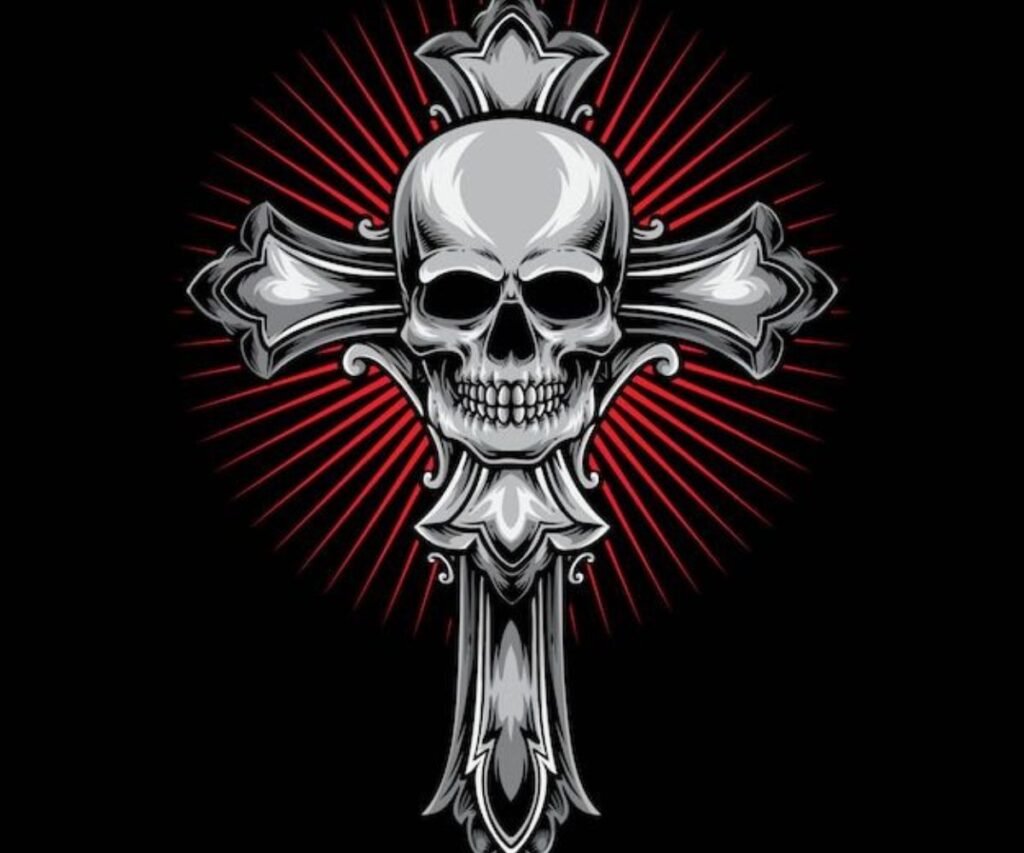
Calaveras aren’t merely decorative skulls—they’re cultural ambassadors bridging life and death with remarkable sophistication. These stylized representations embody Mexico’s unique relationship with mortality, where death becomes a friend rather than an enemy. Unlike Western death imagery that often evokes fear or sadness, calaveras celebrate existence while acknowledging its temporary nature. You’ll find them adorning everything from children’s toys to sophisticated gallery pieces, each carrying deep cultural significance that resonates across generations.
The visual characteristics of calaveras reveal their complex symbolism through intricate decorative elements. Colorful patterns, geometric designs, floral motifs, and precious stone replicas transform simple skull shapes into vibrant artistic statements. Each decorative choice carries meaning—marigold patterns honor deceased loved ones, while metallic accents represent life’s preciousness. During Día de los Muertos, these vibrant skulls transform ordinary households into sacred spaces where families commune with departed relatives, creating bridges between earthly and spirit world realms that define Mexican cultural identity.
Historical Origins of Calaveras in Mexican Culture
Indigenous Mesoamerican civilizations pioneered skull veneration millennia before Spanish conquest, establishing foundations for modern calavera traditions. Aztec culture featured elaborate tzompantli (skull racks) that weren’t macabre displays but sacred installations honoring fallen warriors and sacrifice victims. These ancient peoples understood death’s cyclical nature—endings becoming beginnings in endless cosmic dance. Quetzalcoatl, the feathered serpent deity, frequently appeared with skull imagery representing rebirth, transformation, and the eternal cycle connecting all living beings.
Spanish colonizers introduced memento mori traditions during the 16th century, creating fascinating cultural fusion that would define Mexican art for centuries. European death art emphasized mortality’s inevitability and encouraged religious devotion through fear of judgment. However, indigenous worldviews possessed fundamentally different perspectives on death’s meaning and purpose. Mexican artists gradually merged Spanish religious symbolism with ancestral beliefs, birthing unique artistic expressions that celebrated rather than feared death’s approach, establishing the philosophical foundation for all future calavera art through religious syncretism.
| Period | Cultural Influence | Key Characteristics | Artistic Focus |
|---|---|---|---|
| Pre-Columbian (Before 1519) | Indigenous Mesoamerican | Sacred skull racks, ritual use | Death as transformation |
| Colonial (1519-1821) | Spanish Catholic | Memento mori fusion | Moral instruction |
| Post-Independence (1821-1910) | Mexican nationalism | Folk art emergence | Cultural identity |
| Modern (1910-present) | Revolutionary ideals | Social commentary | Political expression |
José Guadalupe Posada and the Birth of Modern Calavera Art
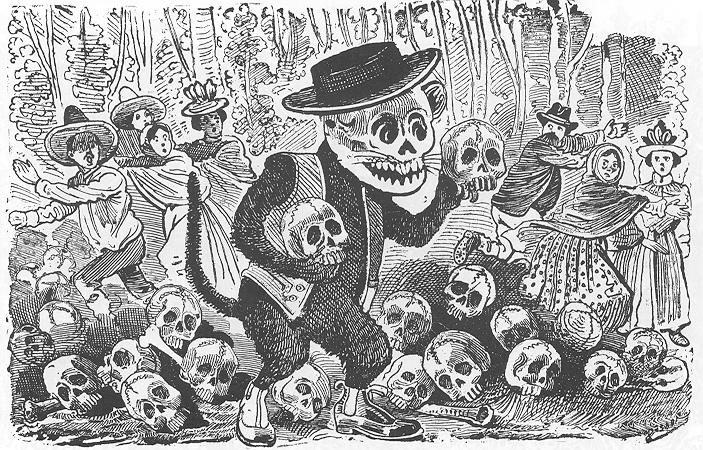
José Guadalupe Posada revolutionized calaveras in Mexican art history during the early 1900s, transforming religious symbols into powerful social commentary tools. This lithographer extraordinaire created thousands of prints for common people, removing art from elite galleries and placing it directly in workers’ hands. His bustling Mexico City workshop produced affordable broadsheets that ordinary Mexicans could purchase, democratizing artistic expression while addressing working-class concerns and political frustrations that mainstream media ignored.
La Catrina emerged as Posada’s masterpiece—an elegant skeleton wearing fashionable European attire while remaining fundamentally skeletal underneath. This satirical creation mocked upper-class pretensions and European fashion obsessions among Mexico’s wealthy elite. Political commentary flowed through his engravings, criticizing corrupt politicians, social inequality, and foreign influence on Mexican culture. Posada’s legacy transformed calavera art from purely religious symbol into powerful social weapon, establishing precedents for political satire that continue influencing Mexican artists today through satirical representation.
“Posada’s genius lay in making death laugh at life’s absurdities while revealing uncomfortable truths about Mexican society.” – Art historian Roberto Tejada
Calaveras in the Mexican Muralist Movement
Mexican muralists elevated calavera imagery to monumental proportions during the post-revolutionary period, integrating skull symbolism into massive public artworks that redefined national identity. Diego Rivera incorporated La Catrina into his famous mural “Dream of a Sunday Afternoon in Alameda Park,” positioning her alongside historical figures including Posada himself. His murals transformed skull symbolism into national identity markers, connecting ancient indigenous traditions with modern Mexican consciousness while celebrating cultural continuity across centuries of change.
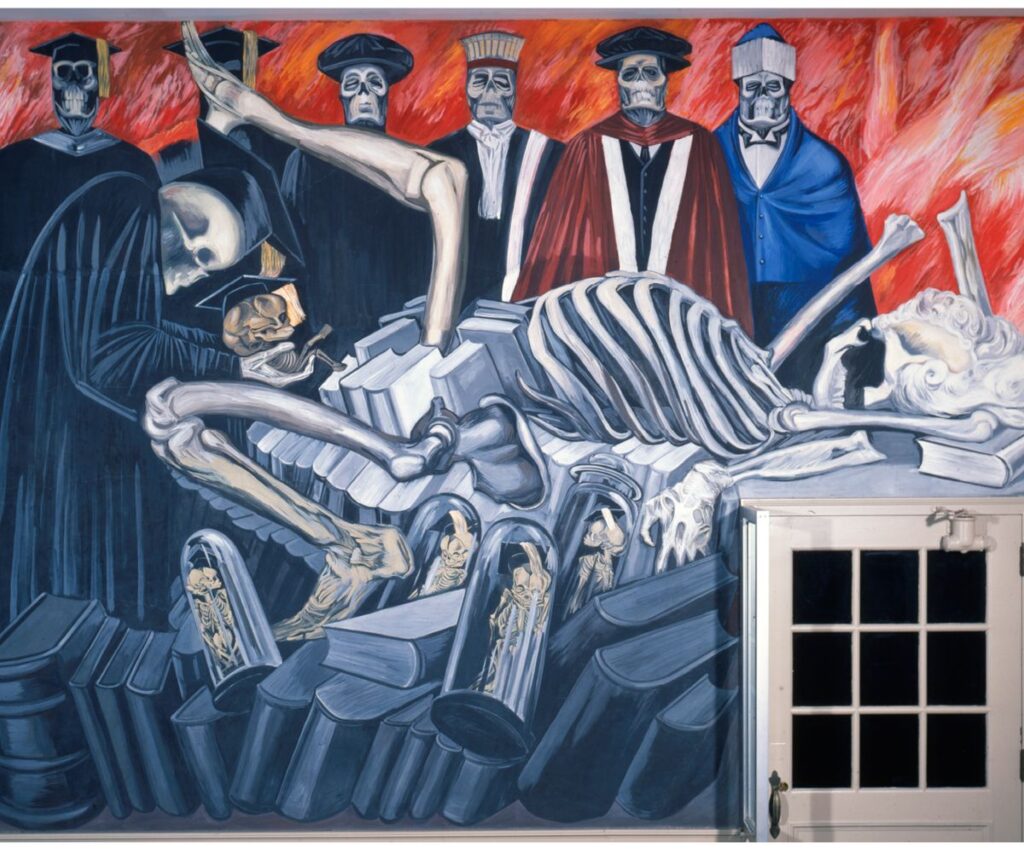
José Clemente Orozco and David Alfaro Siqueiros employed calaveras differently, emphasizing struggle, transformation, and revolutionary ideals through dramatic skull imagery. Orozco’s “Gods of the Modern World” featured skeletal figures wearing graduation robes, delivering scathing critiques of educational systems that failed common people. Siqueiros integrated death imagery into revolutionary narratives, showing how sacrifice leads to social progress. These muralist interpretations demonstrated calaveras’ remarkable versatility in expressing complex social and political themes while maintaining their essential Mexican character and spiritual significance through social realism.
Frida Kahlo’s Personal Use of Calavera Imagery
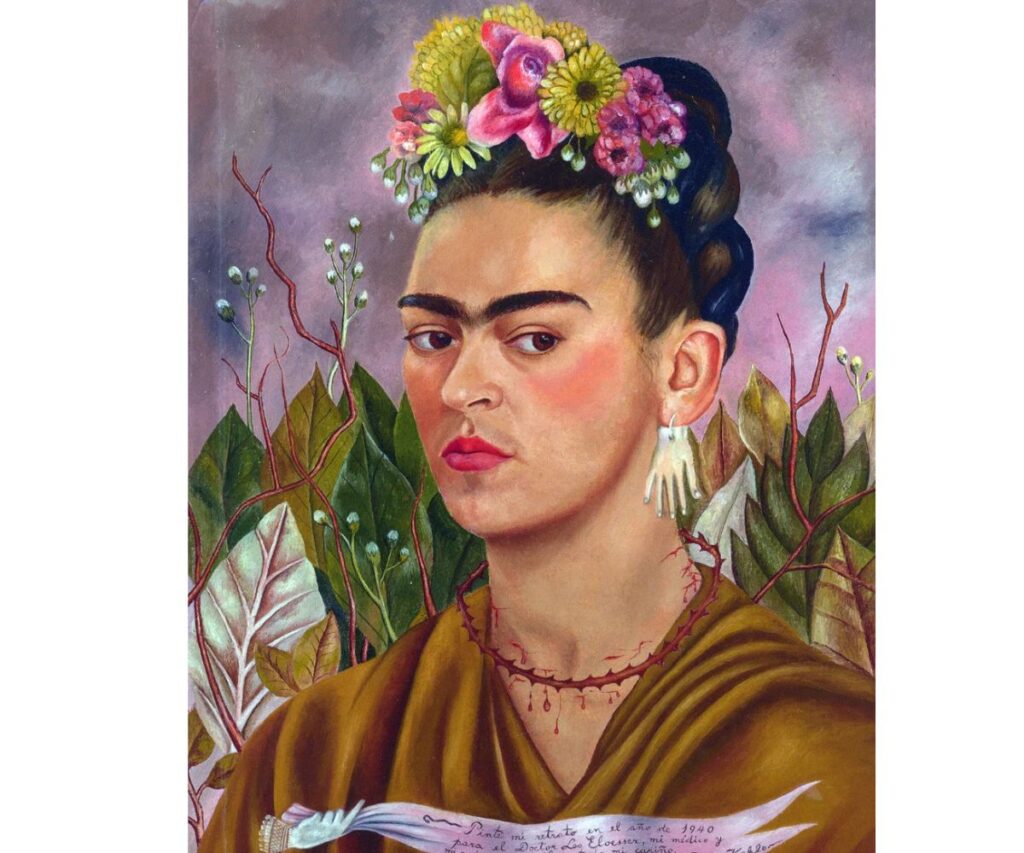
Frida Kahlo infused calavera symbolism with intimate, psychological depth rarely seen in Mexican art history, creating uniquely personal interpretations that explored feminine perspectives on mortality and suffering. Her self-portraits frequently featured death imagery—skulls, skeletons, and mortality symbols—reflecting physical trauma from childhood polio and devastating bus accident injuries. “Girl with Death Mask” (1938) presents childhood innocence confronting mortality’s reality, while other works integrate skull motifs with fertility symbols, exploring women’s complex relationships with creation and destruction.
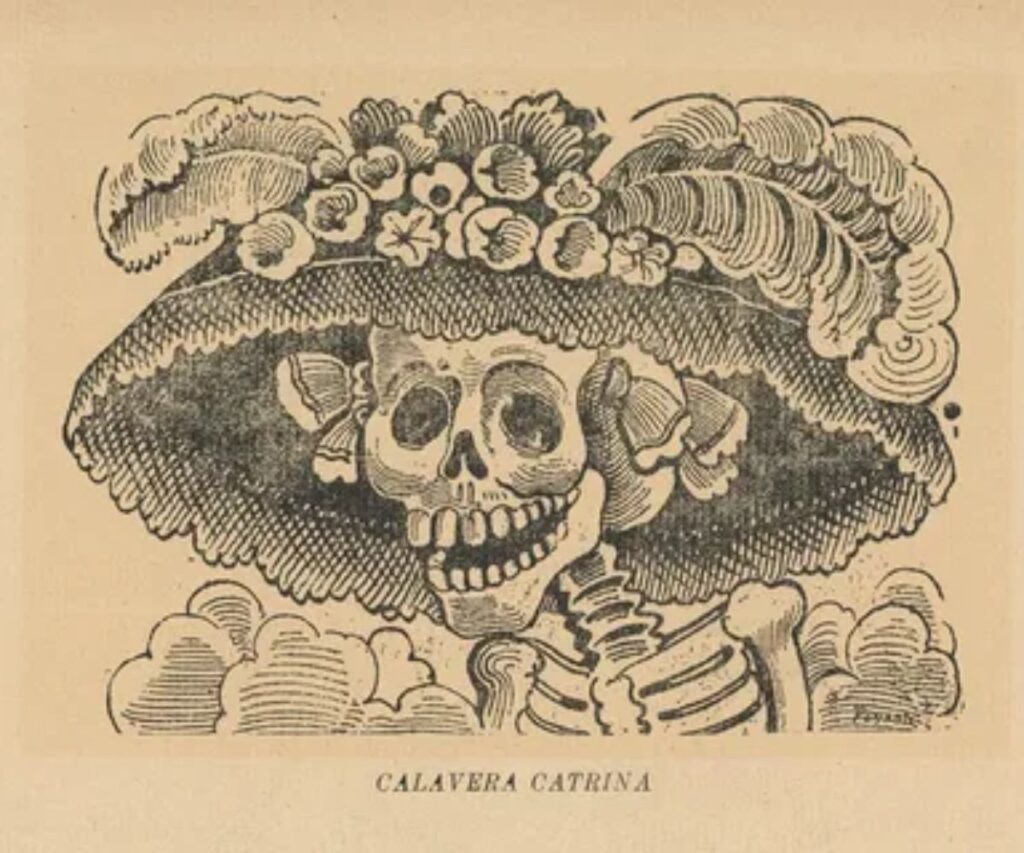
Unlike Posada’s satirical calaveras or Rivera’s historical skulls, Kahlo’s interpretations merged personal pain with cultural traditions, creating vulnerable artistic expressions that resonated with audiences worldwide. Modern feminist artists continue drawing inspiration from Kahlo’s approach, using skull symbolism to explore women’s experiences with motherhood, domestic violence, and cultural oppression while maintaining connections to Mexican heritage through deeply personal cultural expression.
Traditional Calavera Folk Art and Regional Craftsmanship
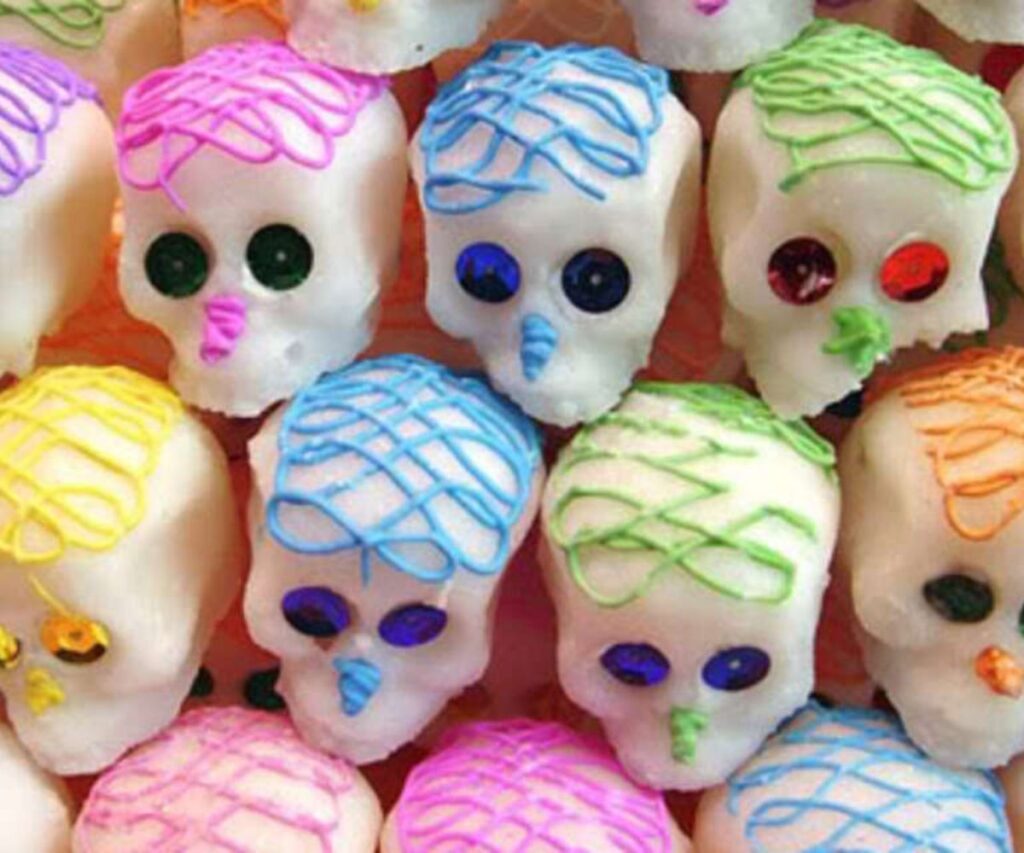
Sugar skulls (calaveras de azúcar) represent folk art’s most beloved expressions, showcasing centuries-old techniques passed through artisan families across Mexico’s diverse regions. Master craftspeople perfect alfeñique techniques, mixing cane sugar with lemon juice before molding intricate designs that prioritize beauty over taste. Regional variations create distinctive styles—Puebla artisans incorporate peanuts for texture, while Oaxacan craftspeople add honey for subtle flavor enhancement. These edible calaveras function as temporary art pieces, often displayed throughout Día de los Muertos celebrations before being respectfully disposed of rather than consumed.
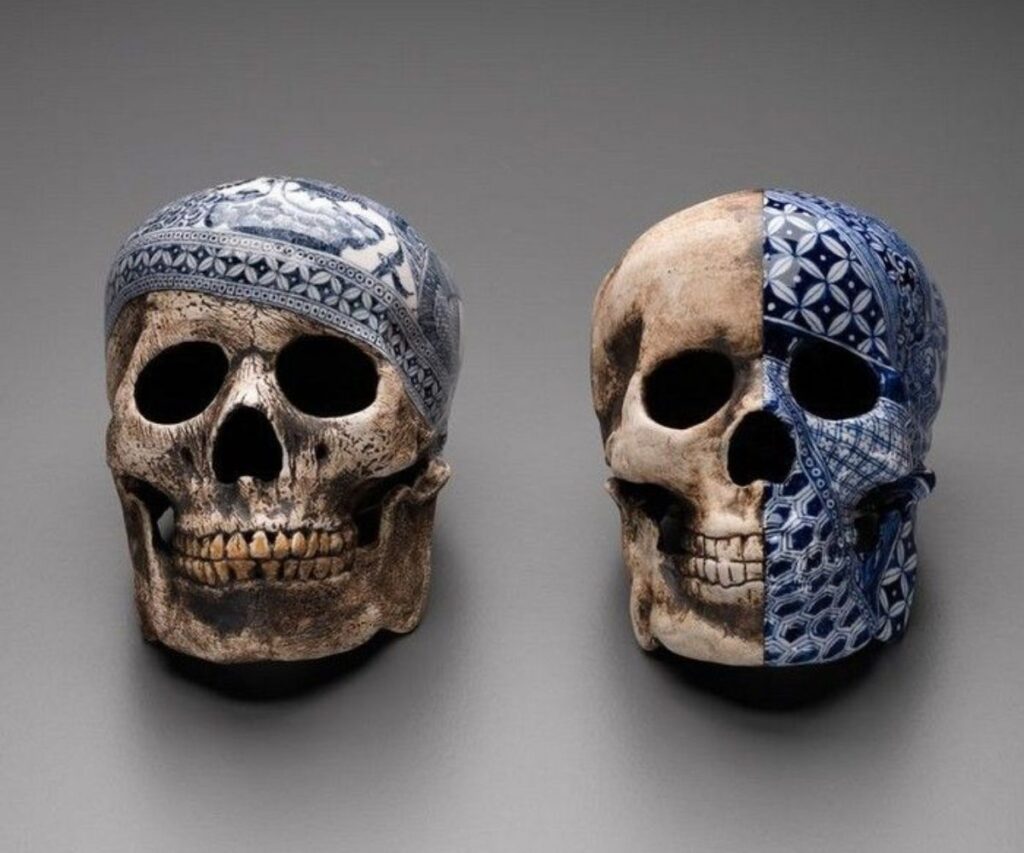
Ceramic and clay calaveras demonstrate regional artistic traditions maintained by master craftspeople who learned techniques from parents and grandparents in unbroken chains of cultural transmission. Artisan families in Capula, Michoacán create hand-painted skulls with distinctive black backgrounds and vibrant floral patterns that have become internationally recognized. Each family maintains unique artistic signatures—specific color combinations, pattern arrangements, and decorative techniques that identify their work to knowledgeable collectors. These traditional crafts support rural economies while preserving cultural heritage for future generations, creating sustainable livelihoods that encourage young people to remain in their ancestral communities through traditional craftsmanship.
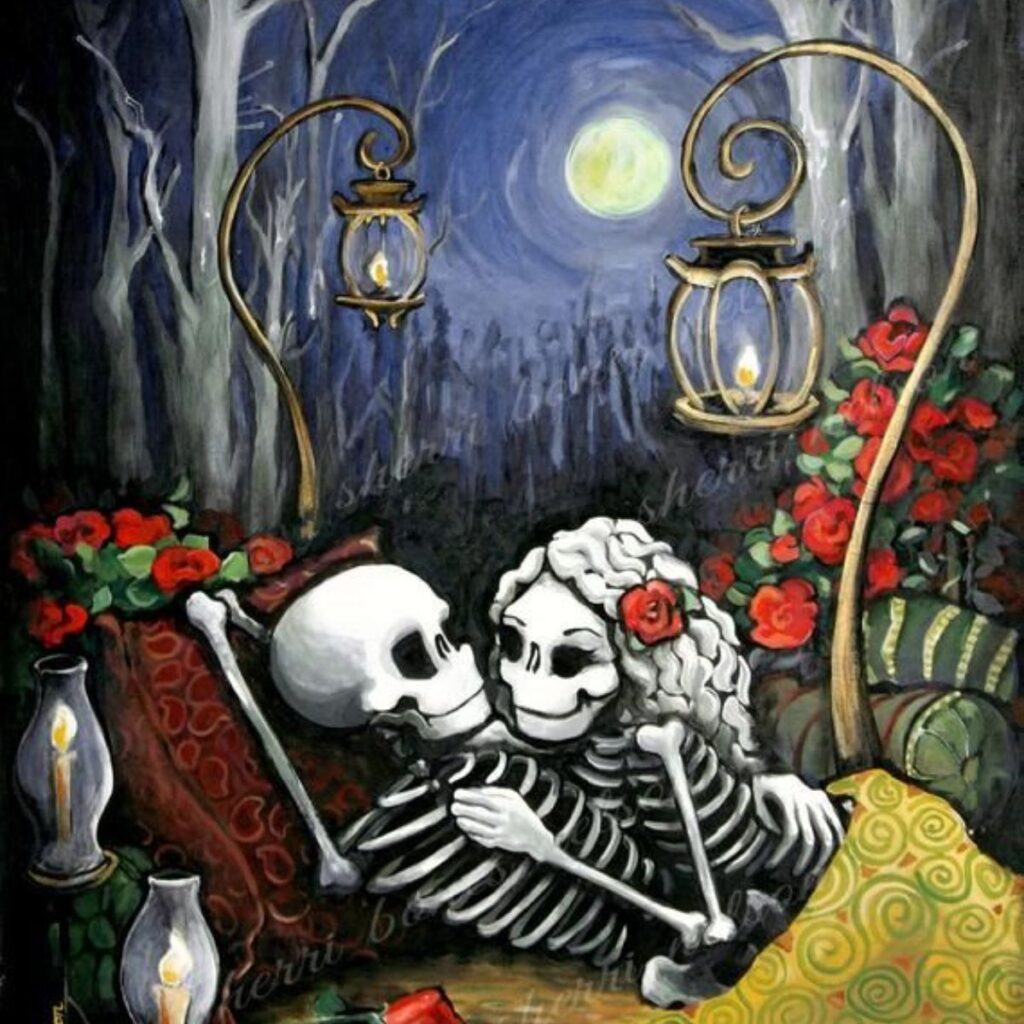
This vibrant painting is a modern expression of Calavera Folk Art, showcasing two skeleton lovers sharing an intimate moment under a glowing full moon. Surrounded by blooming red roses, glowing lanterns, and lush patterns, the image captures the core spirit of Mexican Day of the Dead traditions — where death is not feared, but embraced with love, color, and joy. The skeletons, stylized with human warmth and personality, represent a playful yet profound reminder of life’s impermanence and the enduring power of affection beyond the grave. With elements like the rose in the female skeleton’s hair and the romantic setting, the artwork celebrates the continuity of love in both life and death — a hallmark of Calavera symbolism.
Calavera Face Painting
Calavera Face Painting is a popular way people celebrate Day of the Dead traditions. Many paint their faces to look like skulls, and some even decorate their hands and bodies to look like skeletons — a process that can take several hours.
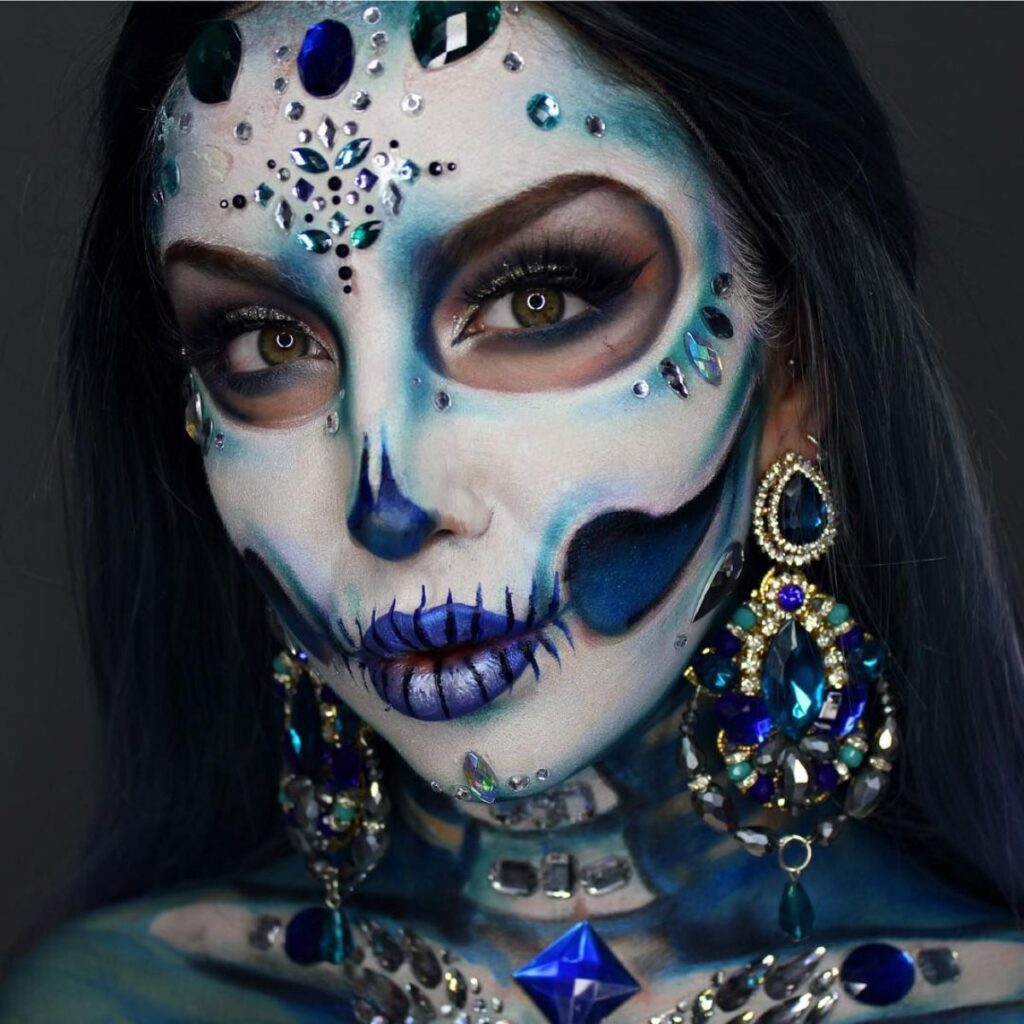
This striking image showcases a modern interpretation of Calavera Folk Art through elaborate face painting. The subject’s face is transformed into a jeweled skull, with shades of blue, purple, and white creating a haunting yet elegant skeletal effect. Inspired by traditional Día de los Muertos (Day of the Dead) imagery, the design blends the classic skull motif with sparkling gemstones, floral patterns, and artistic flourishes around the eyes and lips — a nod to La Calavera Catrina, the iconic skeleton figure created by José Guadalupe Posada.
This style of painting is often inspired by Posada’s famous skull artwork, especially La Calavera Catrina. People also add their own touches, like fancy patterns around the eyes, colorful swirls, and shiny gems, making each design unique and full of personality.
Regional Calavera Styles Across Mexico
- Michoacán State: Known for black ceramic backgrounds with bright floral designs
- Puebla Region: Features peanut-enhanced sugar skulls with geometric patterns
- Oaxaca Valley: Specializes in honey-sweetened skulls with intricate beadwork
- Mexico City: Produces mass-market versions alongside artisanal masterpieces
- Jalisco Province: Creates miniature skulls for jewelry and decorative purposes
Literary Calaveras: Mexican Poetry and Satirical Tradition
Calaveras literarias emerged during the 1870s as satirical poetry complementing visual skull art, creating comprehensive artistic expressions that combined written and visual elements. These humorous verses mock living people by describing their fictional deaths, highlighting character flaws, social positions, and personal quirks with gentle irreverence that maintains affection despite criticism. Newspaper publishers commission seasonal calaveras targeting politicians, celebrities, and public figures, continuing traditions established by Posada and his contemporaries who understood satire’s power in social commentary.
Modern calaveras literarias flourish in Mexican newspapers, cultural festivals, and digital platforms where writers craft personalized poems for friends, family members, and community leaders. These poetic calaveras demonstrate Mexican humor’s unique character—finding joy within mortality’s reality while maintaining respect for subjects being gently mocked. Writers follow traditional structures that require wit, cultural knowledge, and poetic skill to create memorable verses. Contemporary adaptations include social media versions, educational programs teaching students about literary traditions, and international workshops where non-Mexican participants learn about this distinctive art form while gaining insights into Mexican cultural perspectives on death and humor.
Contemporary Calaveras: Urban Art and Global Evolution
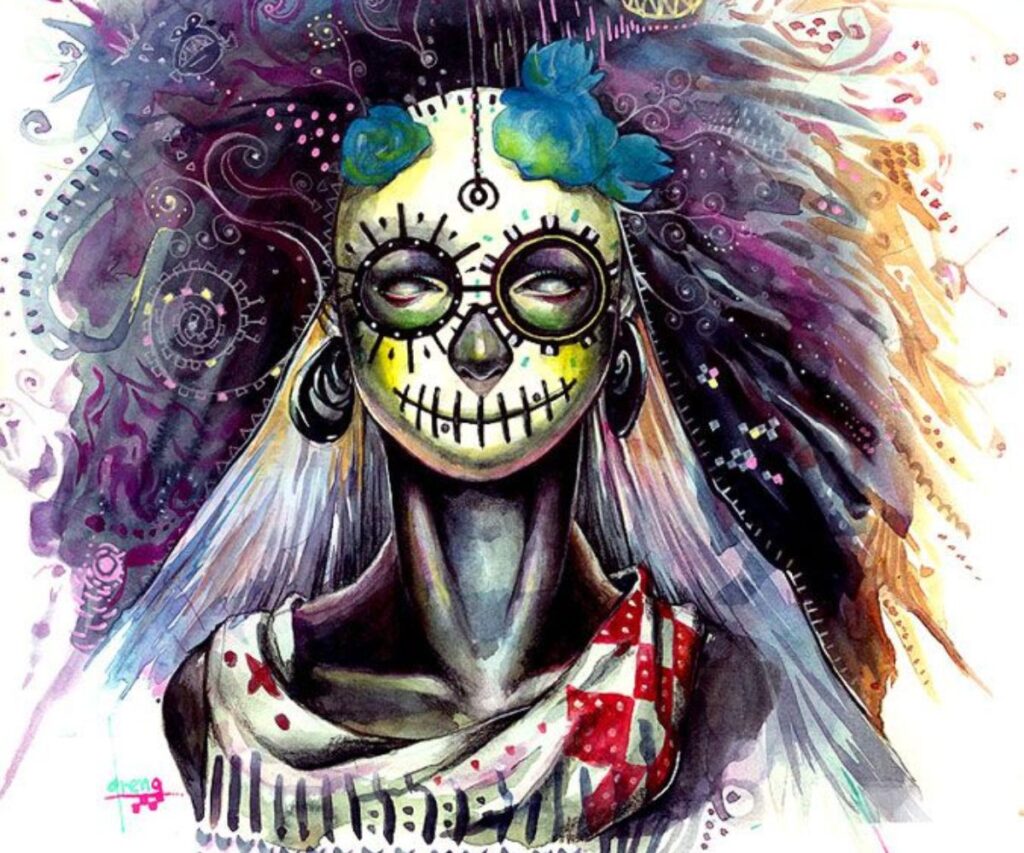
Contemporary calavera art has exploded beyond traditional boundaries into urban murals, tattoo culture, fashion design, and digital media, creating global phenomena that raise important questions about cultural appropriation and artistic authenticity. Street artists worldwide incorporate Mexican skull imagery into graffiti and public installations, often without understanding their cultural significance or spiritual meanings. Fashion brands and entertainment companies frequently strip away cultural context while commercializing imagery for profit, creating tension between cultural appreciation and cultural exploitation that Mexican communities continue addressing through education and advocacy.
Mexican artists navigate between cultural preservation and artistic evolution, seeking balance that honors traditions while embracing innovation and global dialogue. Modern interpretations blend traditional calavera symbolism with contemporary themes—climate change, social justice, technological advancement, and global connectivity—creating relevant artistic expressions that speak to current generations. Digital artists create animated skulls for online platforms, virtual reality experiences, and interactive installations while maintaining cultural respect and authenticity. This balance ensures calaveras remain relevant without losing their essential Mexican identity, creating opportunities for cross-cultural dialogue that enriches rather than diminishes their spiritual and artistic significance.
Spanish Memento Mori Art
The concept of Memento Mori, a Latin phrase meaning “remember you must die,” played a significant role in Spanish colonial art and deeply influenced the visual traditions of Mexico. Originating in European religious art, Memento Mori served as a symbolic reminder of the inevitability of death and the vanity of earthly life. Spanish missionaries brought this tradition to the Americas, where it merged with indigenous views on death, leading to powerful artistic expressions that portrayed skulls, skeletons, and hourglasses. These morbid yet reflective images were used in churches, manuscripts, and even architecture to prompt contemplation about the soul’s salvation and life’s transience.
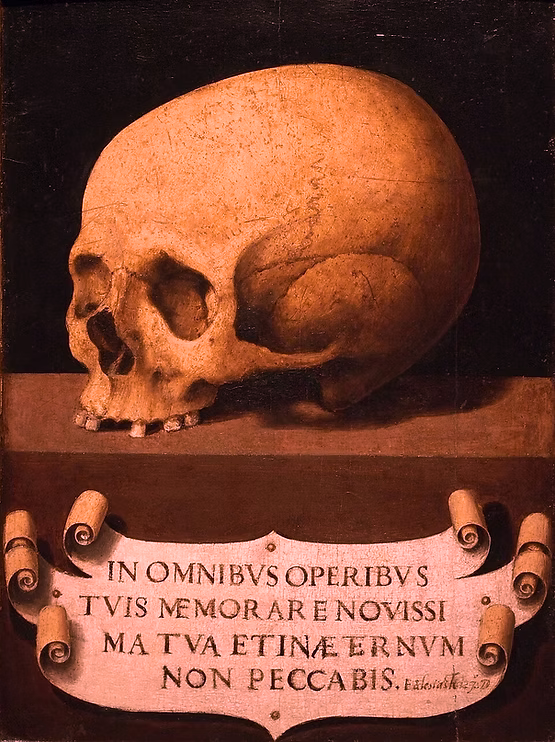
This is a classic Memento Mori painting. It shows a skull with Latin words that remind people they will one day die. The message says, “remember me in all your actions” and tells viewers to live a good life and stay away from sin.
This influence laid the groundwork for the later development of Calavera art in Mexico, where themes of death transformed from somber warnings into colorful, satirical, and celebratory symbols. While Spanish Memento Mori emphasized mortality with solemnity, Mexican artists adapted the style into a more communal and culturally integrated practice. The Day of the Dead festivities, for example, blend Memento Mori principles with indigenous rituals, producing iconic imagery such as decorative skulls, sugar calaveras, and skeleton figurines in joyful, vivid forms. This cultural evolution showcases how colonial influences fused with native worldviews to shape a unique visual language surrounding death in Mexican art.
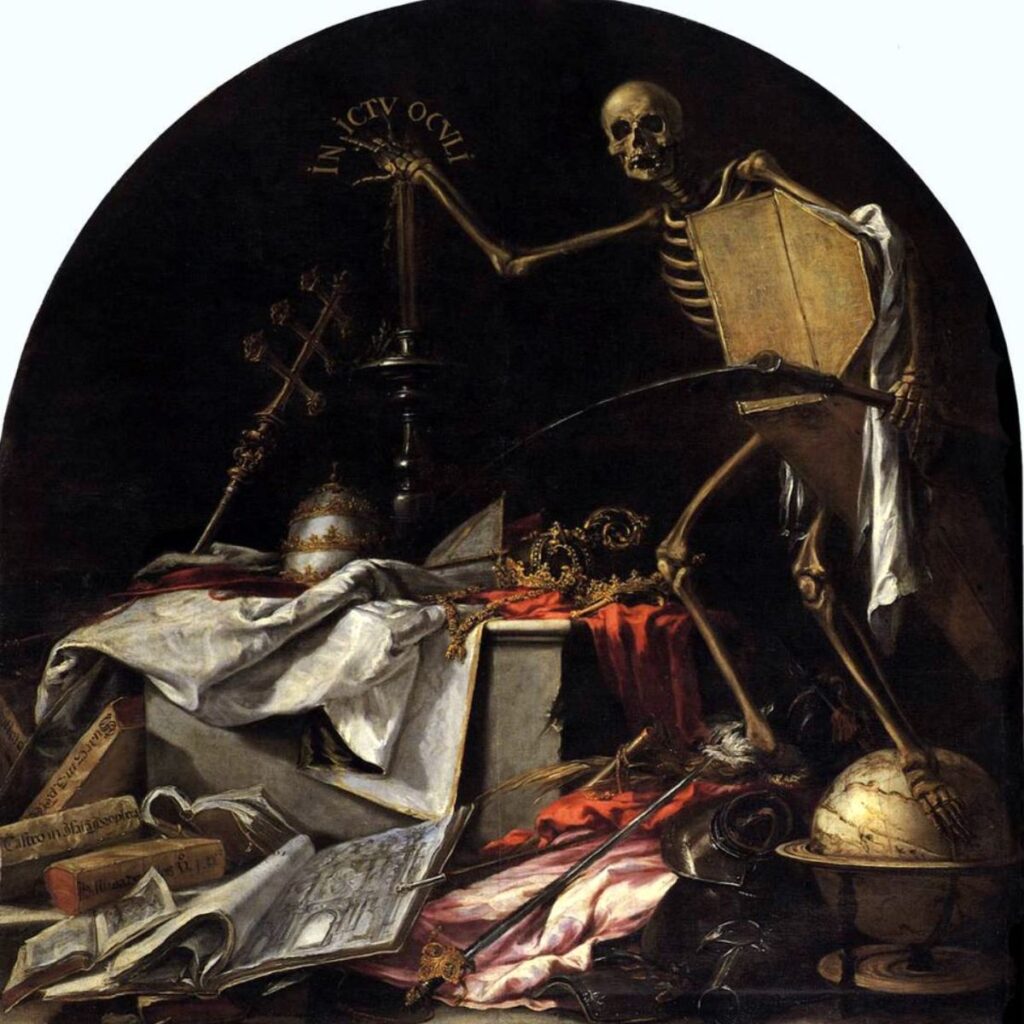
This painting was made for the Hospital de la Ciudad in Seville in the late 1600s. It uses a vanitas theme, which was very popular back then. These kinds of paintings often showed skulls and skeletons to remind people that life is short and material things don’t last. The Latin phrase in the artwork means “in the blink of an eye.”
Calaveras in Día de los Muertos and National Celebrations
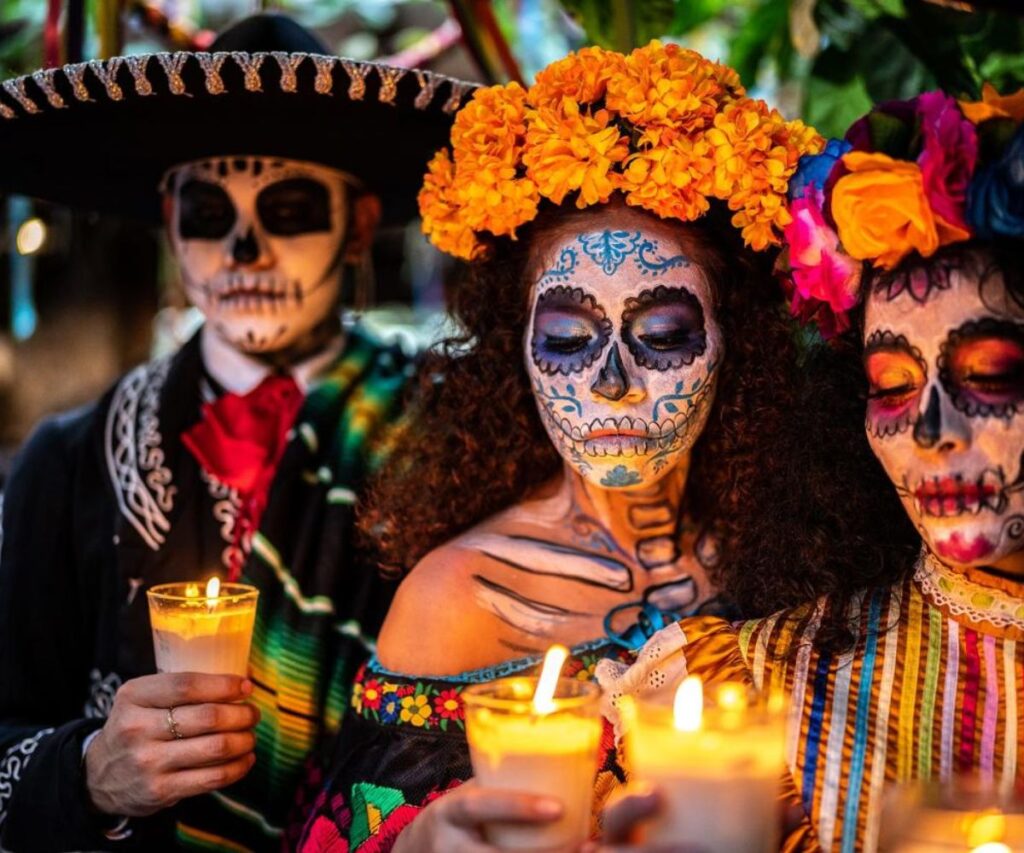
Día de los Muertos celebrations showcase calaveras’ central role in Mexican cultural identity, transforming private grief into community celebration that strengthens social bonds while honoring ancestral wisdom. Families construct elaborate altars (ofrendas) featuring sugar skulls personalized with deceased relatives’ names, favorite foods, photographs, and personal belongings that create intimate connections between living and dead. Face painting traditions transform living participants into beautiful calaveras, blending artistry with spiritual connection that allows families to embody their ancestors’ presence during sacred celebrations.
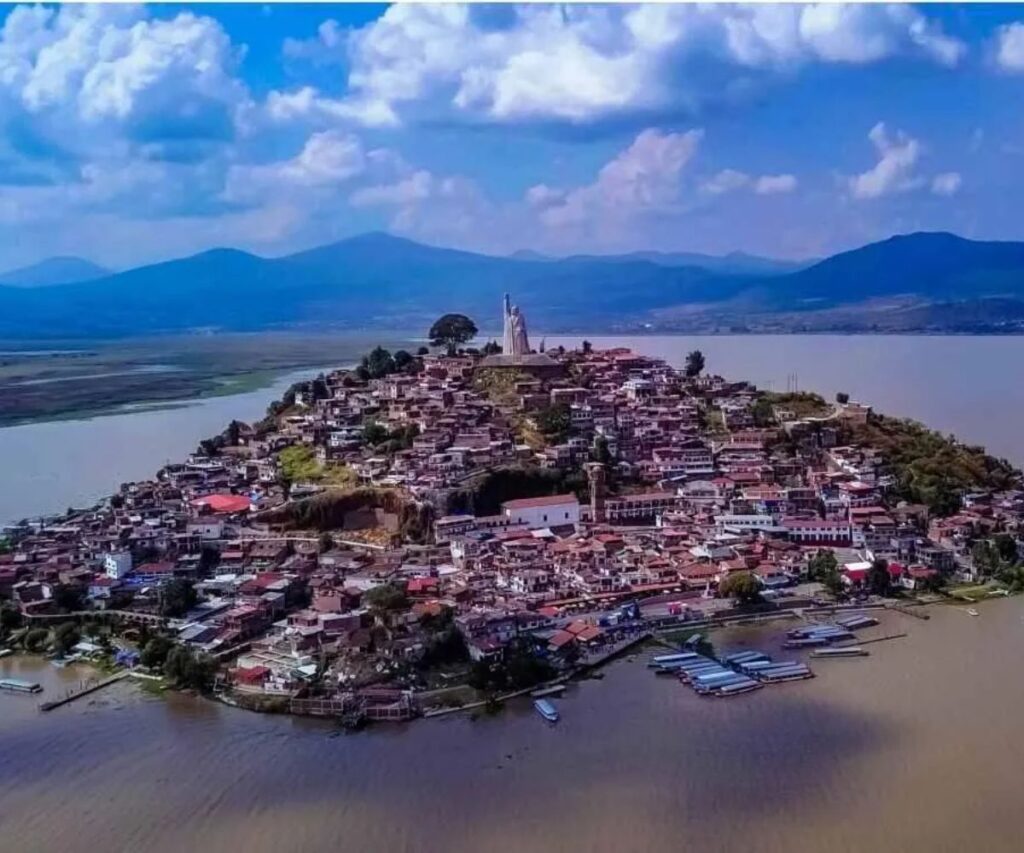
Regional celebrations across Mexico demonstrate diverse calavera traditions that reflect local customs, indigenous influences, and historical experiences unique to specific communities. Janitzio Island in Lake Pátzcuaro features candlelit processions where families carry skull decorations to ancestral graves, creating ethereal nighttime ceremonies that attract visitors worldwide. Mexico City hosts massive calavera parades combining traditional elements with contemporary performances, attracting international tourists while maintaining authentic cultural expressions. These public celebrations educate younger generations about cultural heritage while sharing Mexican traditions with global audiences seeking authentic cultural experiences rather than superficial tourist attractions.
The Cultural Legacy of Calaveras in Mexico and Beyond
Calaveras in Mexican art history have transcended their origins to become global cultural ambassadors representing Mexico’s unique worldview where death enhances rather than diminishes life’s meaning and beauty. UNESCO’s recognition of Día de los Muertos as an Intangible Cultural Heritage highlights calaveras’ international significance as artistic expressions that offer alternative perspectives on mortality, grief, and celebration. Museums worldwide feature calavera exhibitions introducing diverse audiences to Mexican approaches to death, spirituality, and artistic expression while fostering cross-cultural understanding and appreciation.
Educational programs in schools across the United States incorporate calavera crafts, cultural lessons, and artistic workshops that teach students about Mexican history, traditions, and contemporary culture through hands-on creative experiences. Tourism industries benefit from calavera festivals, artisan workshops, and cultural centers that provide authentic experiences while supporting local economies and cultural preservation efforts. However, preservation challenges emerge as younger generations migrate to urban centers, potentially disrupting traditional knowledge transfer between master artisans and apprentices. Cultural institutions work tirelessly documenting artisan techniques, regional variations, and historical contexts before they disappear, creating digital archives and educational resources that ensure future generations can access and appreciate this remarkable artistic heritage.
The future of calaveras depends on balancing cultural integrity with artistic innovation, ensuring these powerful symbols continue inspiring artists while maintaining their essential Mexican soul and spiritual significance. Contemporary Mexican artists lead this effort by creating new interpretations that honor traditional meanings while addressing modern concerns, demonstrating how ancient wisdom can inform contemporary artistic expression and cultural dialogue in our increasingly connected world.
Understanding calaveras in Mexican art history reveals how a single artistic motif can carry centuries of cultural wisdom, political commentary, and spiritual insight while adapting to changing times and global influences. These remarkable skull representations continue inspiring artists, educators, and cultural enthusiasts worldwide, proving that authentic artistic traditions possess the power to transcend boundaries while maintaining their essential character and meaning through continuous cultural expression and artistic interpretation.
FAQ’s about Calaveras in Mexican Art History
❓ What are Mexican calaveras?
Mexican calaveras are artistic representations of skulls commonly seen during Día de los Muertos (Day of the Dead) celebrations. They can be made of sugar, clay, paper, or depicted in paintings and murals. Calaveras reflect a unique blend of Mexican folk art, indigenous beliefs, and Catholic traditions, celebrating life and death with humor and color.
❓ What is the main purpose of calavera art?
The purpose of calavera art is to honor the dead, reflect on the cycle of life, and offer social or political commentary. Traditionally, calaveras help people face mortality with humor and love rather than fear. They also serve as decorative elements in altars (ofrendas) and are central to Mexican death culture.
❓ What is the history of the calavera?
Calaveras have deep roots in Aztec and pre-Columbian cultures, where skull imagery honored death gods and ancestors. The tradition evolved during the colonial era, incorporating Spanish Catholic memento mori. In the 19th century, José Guadalupe Posada popularized modern calaveras in satirical print art, especially La Catrina, now an iconic Mexican figure.
❓ What does the calavera symbolize?
The calavera symbolizes the duality of life and death. It reminds people that death is natural, not to be feared, and that we can celebrate the lives of those who passed. In Mexican culture, calaveras also symbolize ancestral connection, spiritual continuity, and sometimes social criticism through satire.
❓ What is the most famous calavera?
The most famous calavera is La Calavera Catrina, created by José Guadalupe Posada and later painted by Diego Rivera. She is a skeletal lady in elegant attire, symbolizing death’s universality—no matter your status, death comes for all. La Catrina is a cultural icon during Día de los Muertos.
❓ What is the origin of the word calavera?
The Spanish word “calavera” literally means “skull”. It was introduced during colonial times and eventually became synonymous with decorative skull art in Mexican culture. Over time, “calavera” came to describe not only physical skulls but also poems, face paintings, and sculptures used in Day of the Dead celebrations.
If you’re interested in Goth vs Punk, be sure to check out our Goth vs Punk: Key Differences, Origins & Styles Explained to explore more unique and dark options!


I really like your blog.. very nice colors & theme. Did you
design this website yourself or did you hire someone to do it for you?
Plz respond as I’m looking to create my own blog and would like to know where u got this from.
thanks
Thank you so much! I designed and customized it myself to match the gothic aesthetic — glad you liked it! Wishing you the best with your own blog.
Really no matter if someone doesn’t understand afterward its up to
other people that they will help, so here it happens.
Exactly! I believe in sharing and inspiring — that’s how the gothic community grows and keeps its mysterious charm alive.
I know this web site provides quality dependent content and
extra data, is there any other website which gives these information in quality?
Thank you for asking! There’s a real lack of such deep, focused information online — that’s exactly why I created this blog. 🖤
I am sure this post has touched all the internet viewers,
its really really fastidious post on building up new webpage.
Thank you for your kind words! I’m delighted you found the post inspiring — creating something meaningful online is always worth it. 🖤
Nice answer back in return of this issue with solid arguments and explaining
everything concerning that.
Thank you so much! I’m glad the response felt clear and well-reasoned — your appreciation truly means a lot. 🖤
An intriguing discussion is definitely worth comment. There’s no doubt that that you need to publish more about this
subject, it may not be a taboo subject but usually people don’t
speak about these issues. To the next! Best wishes!!
Thank you for your insightful words! I completely agree — gothic themes deserve more open conversation, and I’ll be sharing more soon. 🖤
Hi there friends, nice article and fastidious arguments
commented here, I am truly enjoying by these.
Thank you for your thoughtful comment! I’m glad you’re enjoying the discussion and the gothic-inspired vibes here. 🖤
Spot on with this write-up, I actually believe this website needs a lot more attention. I’ll probably be back again to read more, thanks for
the advice!
Thank you so much for your kind words and support! I truly appreciate it — more darkly inspiring content is on the way. 🖤